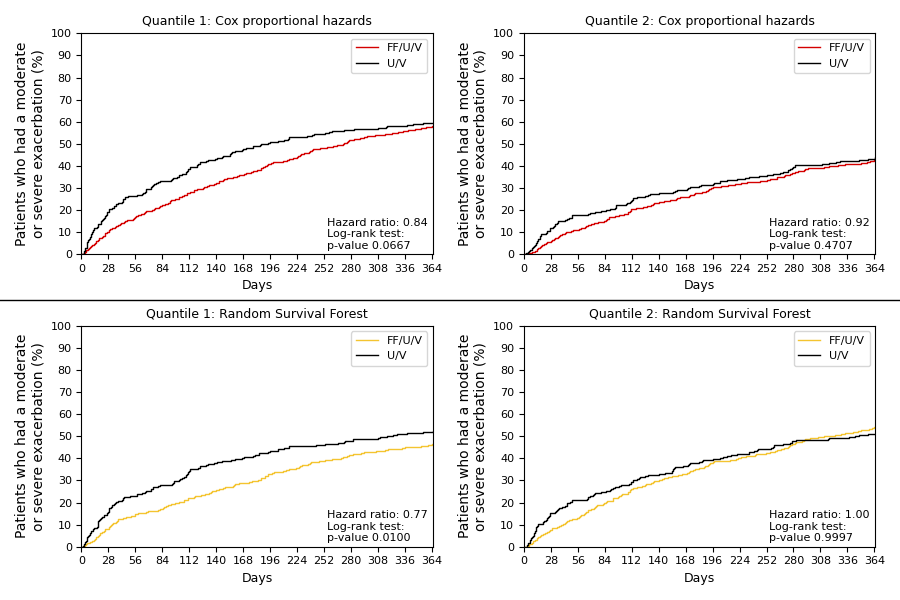Abstract
We aimed to identify heterogeneity in the treatment effect of triple therapy (LABA/LAMA/ICS) compared to dual therapy (LABA/LAMA) for COPD exacerbation risk.
We used data from subjects in the fluticasone furoate/umeclidinium/vilanterol (FF/U/V, n=3989) and U/V (n=2001) arms in the IMPACT trial (NCT02164513). Subjects were split (70:30) in a training (n=4193) and independent test set (n=1797). We applied survival analysis on time-to-first exacerbation and compared Cox proportional hazards model (CPH, one model for both arms) with machine learning model Random Survival Forest (RSF, one model for each arm). The models were trained to predict changes in hazard ratio (HR) caused by the added effect of ICS using baseline characteristics in the training set and validated on the test set.
For both models, test set subjects were ranked in ascending order based on their predicted change in HR and split into two quantiles (figure). For CPH (C-index 0.59), HR in quantile 1 was 0.84 (p=0.07) and 0.92 (p=0.47) in quantile 2. For RSF (C-index FF/U/V 0.60, U/V 0.62), quantile 1 had a HR of 0.77 (p=0.01) and quantile 2 a HR of 1 (p=1.00).
Compared to the overall reduction in risk of exacerbations (HR 0.84 in IMPACT), we identified subgroups with lower and higher risks, indicating heterogeneity in the treatment effect of triple versus dual therapy. RSF found more heterogeneity compared to CPH.
